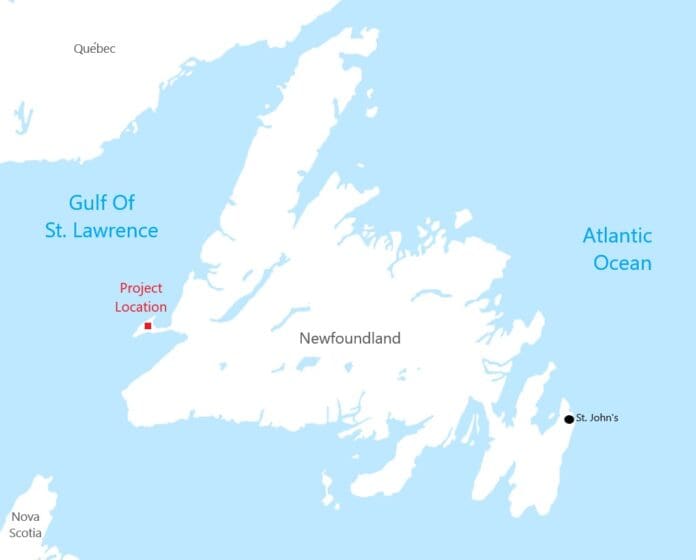Bloom Energy Corp. will provide its solid oxide electrolyzers (SOEC) to the Nujio’qonik project, a US$12 billion intercontinental green hydrogen commercialization effort in Canada. The project, led by Canada-based World Energy GH2, will produce green hydrogen and green ammonia in the province of Newfoundland and Labrador, in eastern Canada, by 2025 and 2026, respectively.
The project will be executed in three phases, with the initial phase carrying a budget of US$4.5 billion. This phase aims to generate 1 GW of wind power for electricity production, alongside the installation of 600 MW of SOEC and proton exchange membrane electrolysis cells (PEMEC). These cells will facilitate the production of green hydrogen through the process of electrolysis. Additionally, the project will include the construction of green ammonia plants, which will process approximately 60,000 tons (54,431 tonnes) of green hydrogen into roughly 360,000 tons (326,587 tonnes) of green ammonia each year.
SK Ecoplant will provide front-end engineering design services, as well as installation of electrolysis cells. Siemens will provide PEMEC and Bloom Energy will supply SOEC.
The Nujio’qonik project includes a 0.5-GW hydrogen facility at the Port of Stephenville, up to 164 wind turbines for 1 GW of power generation on the Port au Port Peninsula, and associated transmission and supporting infrastructure.
The facility is planned to have three LM6000 aero-derivative gas turbines as supplementary power sources. These units would be initially started using diesel fuel, then switched to hydrogen fuel after reaching full power.
Approximately 80% of the hydrogen produced will be used to produce ammonia, with most of the ammonia delivered to existing marine export facilities by pipelines placed underground or on pipe racks. From there, ammonia will be transported globally by dedicated ammonia carriers.
In August, Topsoe, a provider of carbon emissions reductions technologies, signed an agreement with World Energy GH2 to supply its dynamic ammonia loop technology for the Nujio’qonik project. Topsoe’s ammonia loop technology will be used to generate up to 1819 tons (1650 tonnes) per day of renewable ammonia on the site.
“Nujio’qonik is one of Canada’s first-to-market projects to produce hydrogen and ammonia at scale using renewable wind energy. It is a key cornerstone of the country’s agreement with Germany to stimulate hydrogen production by 2025,” said John Risley, chair of World Energy GH2. “The Nujio’qonik project will be instrumental in ensuring Newfoundland and Labrador takes its place in the fight against climate change and becomes a catalyst for the development of other renewable hydrogen projects across Canada and the world.”
















